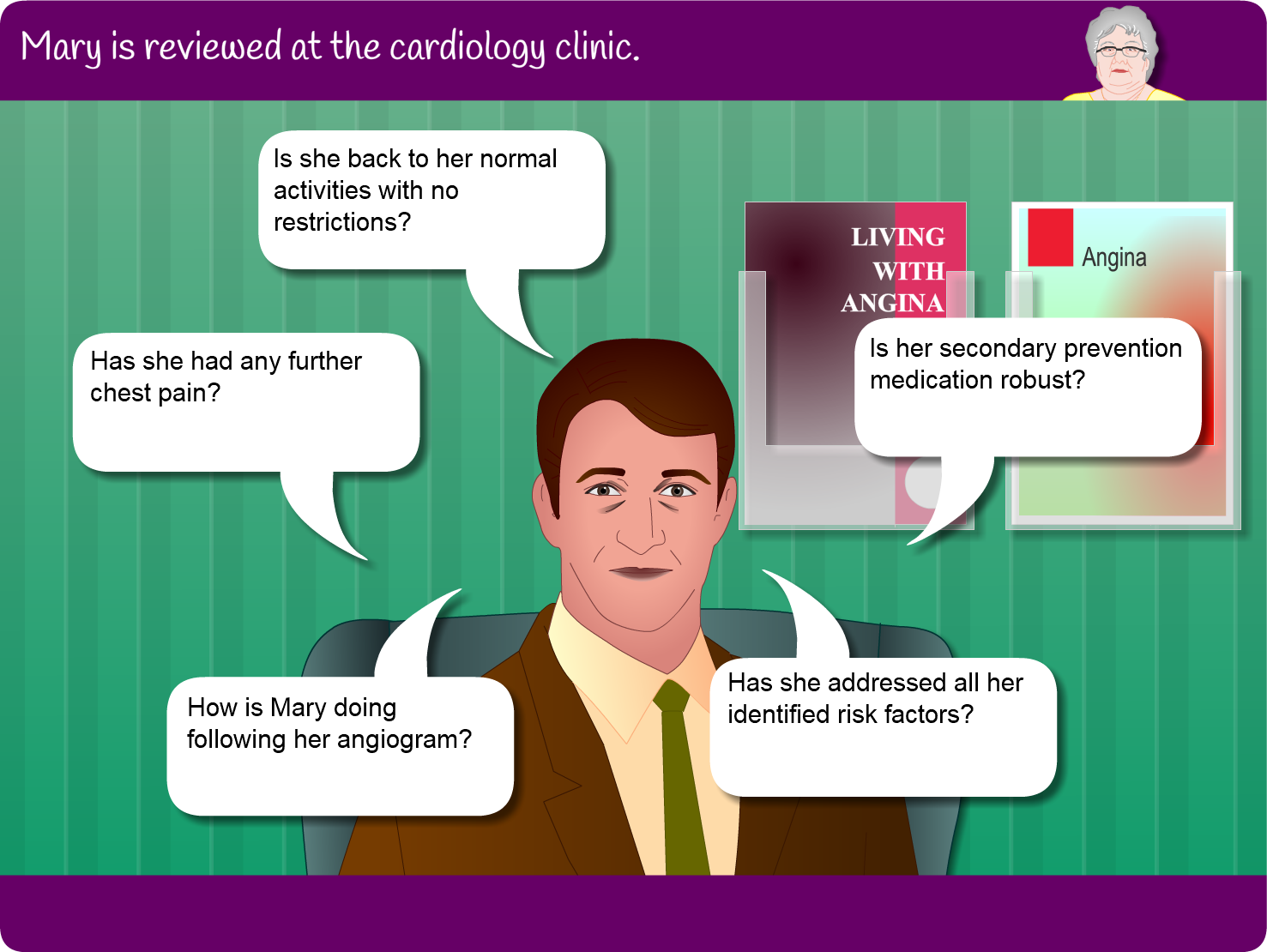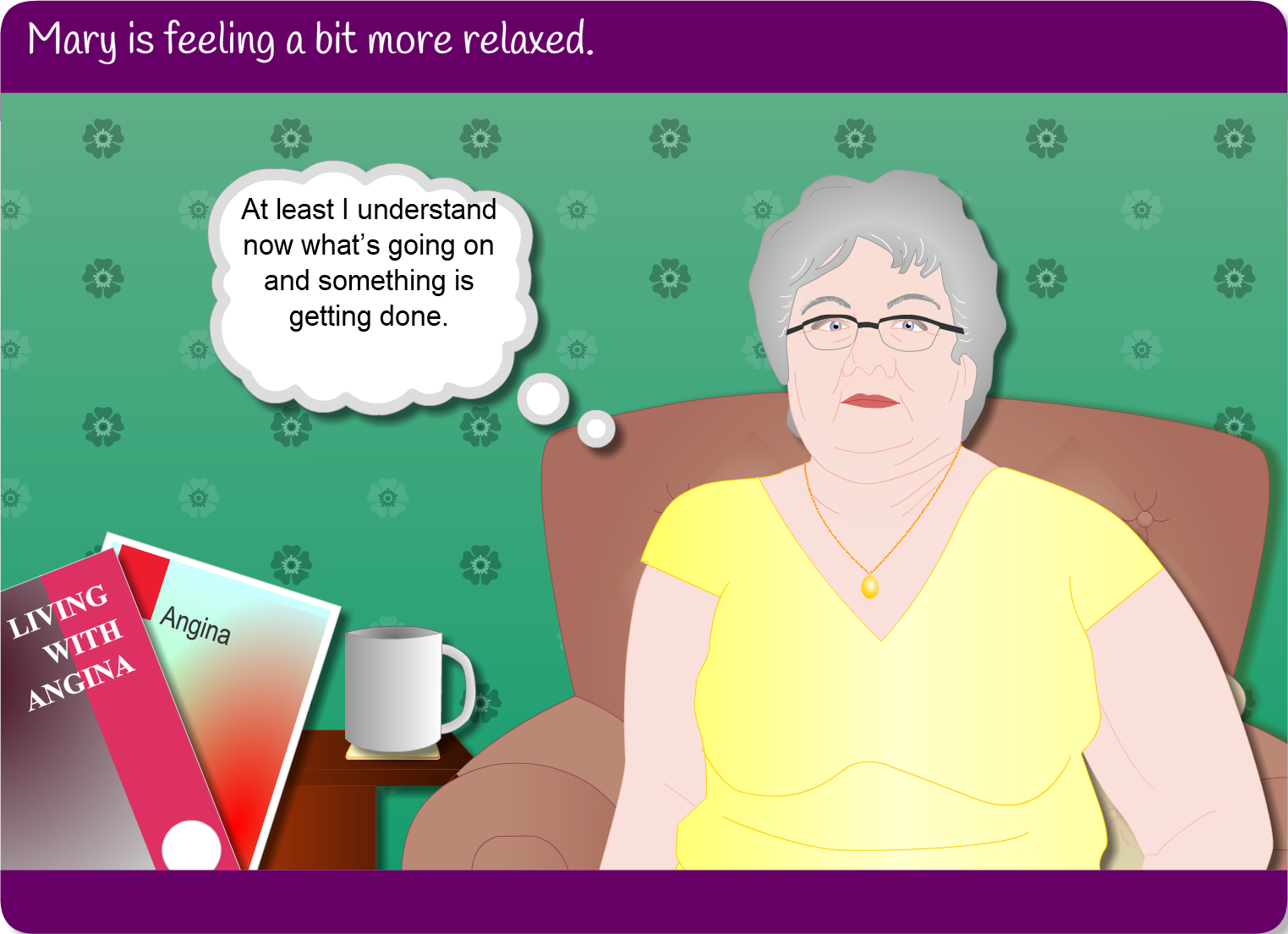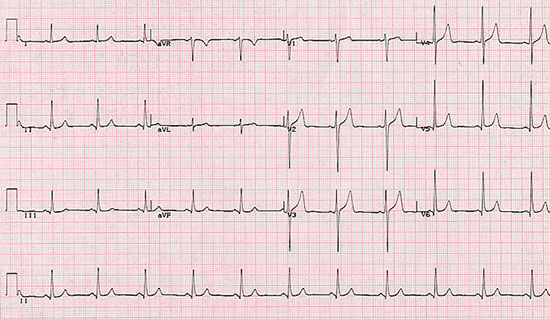Category: HEARTe
Review at Cardiology clinic

Mary attends for a Cardiology review following her angiogram. She is doing very well and has had no further chest pain. She reports to being back to her normal activities with no restriction in her daily activities but recognises the need to be more active … She is on all appropriate secondary prevention medication and reports no adverse effects from this. She is aware of her lifestyle issues that she needs to address and has agreed to be referred to the cardiac rehabilitation service.
Mary is discharged from the cardiology clinic back to her GP awaiting an appointment to be seen at cardiac rehabilitation.
Mary leaves the clinic awaiting angiography

Mary leaves the clinic well informed with patient information leaflets.
Mary’s medication
Explanation of results and future plan
Mary’s exercise test result
Mary developed pain on the treadmill and her ECG showed abnormal changes. The test was stopped due to these changes:
The result of Mary’s test was positive. She had a normal HR and BP response however the significant change was the ST segment depression on her ECG with associated chest pain in stage 2 of the Bruce protocol at 4 and a half minutes. This demonstrates inducible ischaemia (reduced blood flow through one of the coronary arteries during exercise).
Diagnosis by exercise testing
Exercise Treadmill Testing
The treadmill test (also known as exercise tolerance test) shown in the video clip is not Mary’s case but a snapshot of a patient undergoing an ETT at RACPC.
For more information about ETT see modules 1 and 4.
Mary’s investigations

After her physical assessment Mary has an ECG performed. Frances tells her that this looks normal.
She goes on to explain that the next investigation will be an Exercise Treadmill Test (ETT).
Before she came to the clinic Mary tells Frances that she read the leaflet she had from the RACPC and read the following prior to:
- Eat only light meal
- Wear comfy shoes
- Avoid strenuous exercise for 4 hrs before
- Avoid or reduce smoking 24 hrs before
- Any medication instructions
- Needs Consent
- Should have had information on the ETT test
Physical examination and further investigations
Patients with suspected angina should have a detailed initial clinical assessment which includes history, examination and assessment of blood pressure, haemoglobin, thyroid function, cholesterol and glucose levels.


